Blackjack Payouts: Getting The Biggest Bang For Your Buck
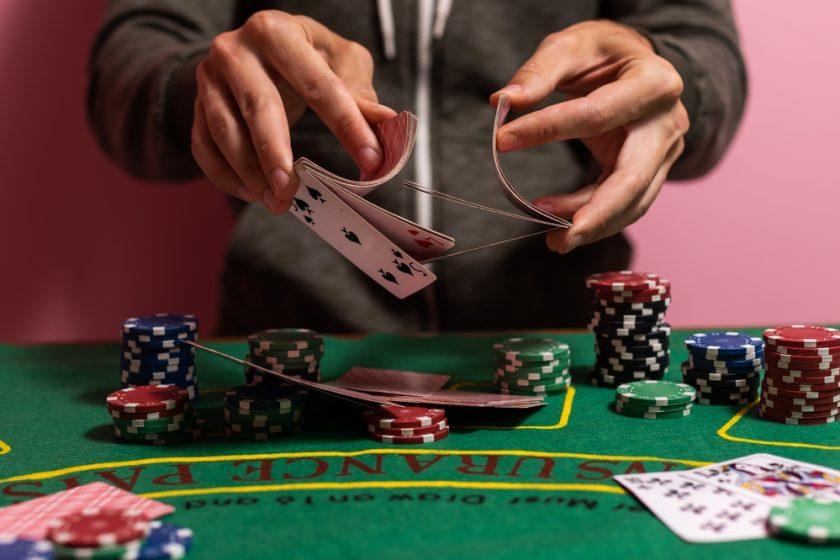
Blackjack Payouts: What You Need to Know
- Blackjack payouts refer to the amount a player wins from a successful hand, often presented as a ratio like 3:2 or 6:5.
- The standard blackjack payout for a natural 21, also known as a blackjack, is typically 3:2. This means a $10 bet would result in a $15 win.
- Some casinos may have tables with a lower blackjack payout of 6:5, which decreases player returns and increases the house edge.
- Other blackjack winning hands typically have a 1:1 payout, meaning if you bet $10 and win, you receive $10 plus your original bet back.
- Understanding blackjack payouts and their impact on your overall blackjack strategy and game value is critical to successful blackjack play.
Blackjack is one of the most popular and exciting casino games in the world, with billions staked worldwide every year. It is therefore important that you get the best value and seek the games that pay out the most when you win.
The good news is that blackjack payouts are much higher than other casino games – provided you make the right plays. And you can make a huge amount of money if you play well.
Blackjack Payouts: How Are They Defined?
The RTP, or return to player, will be declared by most reputable casinos. You will find it under the help button for the game. The RTP is the amount that you would expect to get back for each pound, dollar or euro that you stake. The typical industry average for blackjack is 99.5% which is much higher than for slots or roulette.
The normal blackjack payout for a winning bet is 1:1. However, all casinos offer you the chance to double your stake when you have certain blackjack hands, always 9, 10 or 11 and often any two cards. If you win, you then get paid even money on the doubled stake, so still 1:1.
However, you only get one extra card, so you should only double when the basic blackjack strategy charts tell you to do so. But if you lose, you lose the doubled stake. Blackjack, which is an ace with any of a ten, jack, queen or king, invariably pays 3:2. So if you win, you get 1.5x?times your stake. If you stake £2 or $2, you would win an extra £3 or $3.
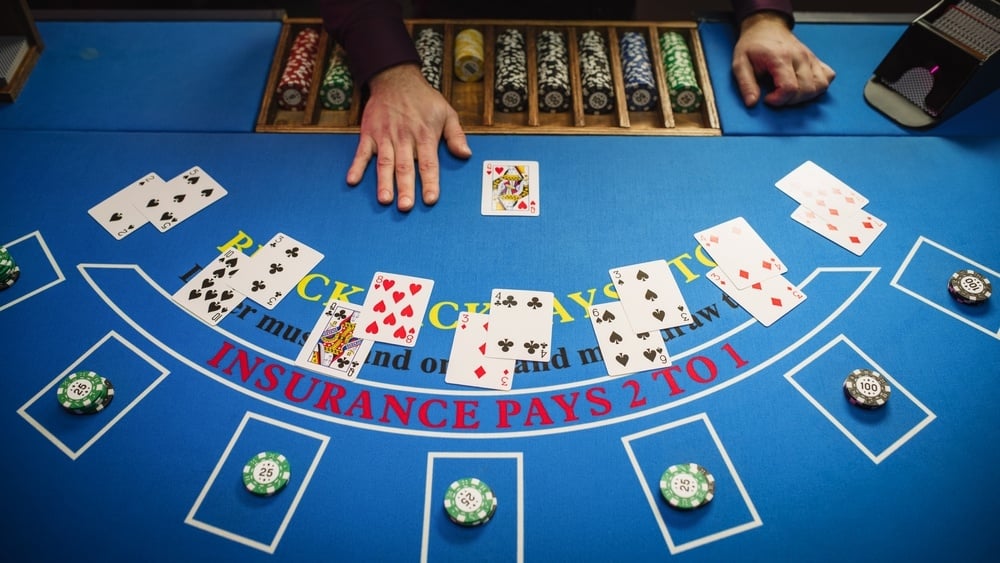
Image credit: Swazall/Shutterstock
Top Tip: Always Check the Blackjack Payouts
While most casinos offer 3:2 for blackjack, there are some that only pay 6:5. Naturally enough they do not advertise this on their front page, and you have to check the rules of the game to find this out.
Unless there is some reason such as a generous casino bonus to play a game that pays only 6:5 for blackjack, you should avoid those games. There are plenty that offer 3:2.
Blackjack Variations And How They Impact Payouts
American Blackjack
American blackjack differs from European blackjack because the dealer peeks when she has a ten face up to check for blackjack before any play.
If an ace is face up, insurance is offered, a bet that the dealer has a ten, paid at 2-1. You can split a pair of the same rank, usually up to four hands depending on house rules. The RTP is usually around 99.6%
European Blackjack Payouts
European blackjack is a little different. There is usually no hole card, or if there is, the dealer does not check for blackjack when she has a ten, so you can lose to a blackjack after you have doubled or split. This means that basic strategy changes.
Also the dealer stands on soft 17 which is an ace and a six, or an ace with any number of cards totaling six. Usually only two hands are allowed, so you cannot re-split if you get another pair. The blackjack payout is slightly less, around 99.5% depending on specific rules.
Progressive Blackjack Payouts
This is a side bet, rather than a separate game. You make a separate bet on the first four cards, your two and the dealer’s two. It is usually played with six decks, but four and eight are common. You get paid out on the number of aces in those four cards, with the jackpot, which increases until it is won, paid out on four aces of the same color.
The RTP varies with the size of the jackpot. If the jackpot is low, the RTP is a paltry 45% up to the largest I have seen at 60%. That was when the jackpot in New York New York Casino was over $100,000. For the player to have an advantage on this bet, the jackpot would need to be about $2,500,000.
Spanish 21 Blackjack Payouts
Spanish 21, called Pontoon in Malaysia and Australia, the four tens are removed, but otherwise normal blackjack rules apply. There are lots of “extras” such as bonuses for 678 and 777. Also the rules (apart from the tens being removed) are favorable in that you can double on any number of cards, and late surrender, for example. The RTP is 99.6% to about 99.2% depending on which of the many rules apply.
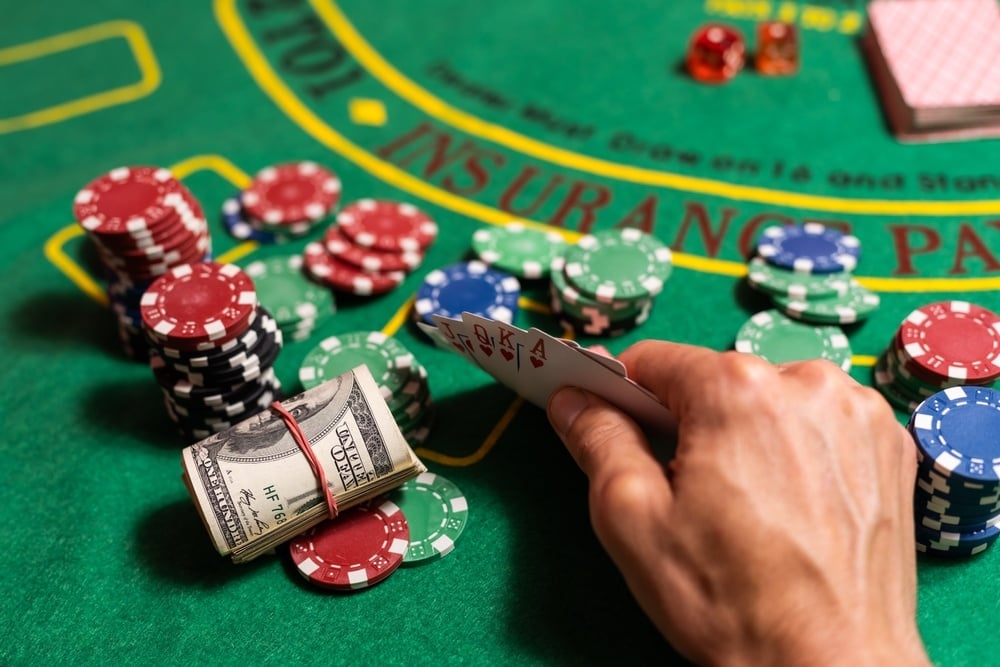
Image credit: Swazall/Shutterstock
Push 22 Variants
Push 22 Blackjack is a variant of blackjack in which if the dealer busts with a point total of 22, it results in a “push” rather than a win for the player. A “push” means all remaining player wagers on the table are returned as a draw, except for player blackjacks which are still paid. This specific rule significantly increases the house edge and changes the optimal strategy compared to traditional blackjack.
Blackjack Switch
This wonderful game was invented by blackjack (and backgammon) guru Geoff Hall. You play two hands and can swap the top card of each hand. That sounds like a great deal.
If you have T5 on one hand and 6J on the other hand, you would swap and now have 11 and 20, and you can double down on the 11 as well. It comes at a price, of course, and if the dealer gets 22, it will be a push against all hands which have not bust except blackjack. The expected blackjack payout is 99.4%.
Free Bet Blackjack
Another game invented by Geoff Hall which appears in US casinos and increasingly online. The player can get a free double, where he does not have to double his stake, and a free split, where he does not have to add a second stake. However, the dealer again pushes against all hands except blackjack that are still on the table when she has 22.
The return to the player is 98.9%, so this is less attractive than normal blackjack, but sometimes the game in the player’s favor when the chance of the dealer getting 22 drops, but that requires a computer to calculate.
Power Blackjack
There seem to be two version of this game, using the word power. The American version has a game where one can double and change the card he or she gets if desired.
Also one can split on any two cards, doubling the stake. The quid pro quo for the house is that if the dealer gets 22, it is a push against any hand still on the table other than blackjack.
Lightning Blackjack
This is best avoided as the correct play is often counterintuitive, with doubling down on hard totals common. The final totals 18, 19, 20, 21 and BJ get multipliers which increase your winnings by varying amounts, up to 25 times, provided you have the winning hand.
The game states a return of 99.2% which is about right, but only with perfect play. If you don’t know the unusual actions, you will lose heavily.
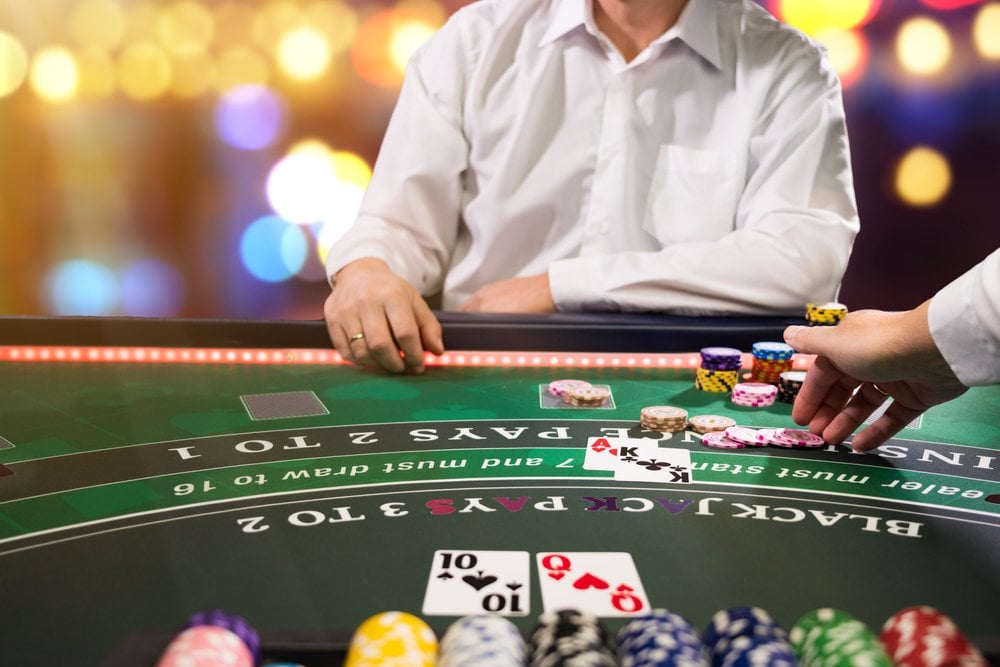
Image credit: Swazall/Shutterstock
Finding The Best Returns and Blackjack Payouts
The best games depend on whether you want to play every hand, or are prepared to sit and twiddle your thumbs. The former is the single deck, multi-player game. Microgaming claim that the return to player is 99.69%.
Playing perfectly, one might even do better than that and I think the figure is nearer 99.8%. However, playing basic strategy it is about 99.5%. The game is shuffled after every hand, so there is no need to count!
Top Tip: Blackjack Insurance Can be The Right Move
The insurance bet, always of half your stake, is a bet that the dealer has Blackjack when she has an ace showing. Other sites have said “Never take insurance”, but this is wrong. Certainly it is wrong for a single-deck game.
If two of the 11 cards you can see at the start are tens, then the insurance bet has a return of 102.4% and should be taken. The advantage for the player is greater if only one or no tens are visible. The insurance bet is often favorite in shoe games as well when the deck is replete with tens.
The Effect of Rule Changes on a Blackjack Payout
Changes in the rules affect the payout expectancy. The most common rules are probably the following, common with Evolution, Playtech and Pragmatic Play, the main providers: Evolution have six-card Charlie and Playtech has double after split.
Typical Rules in Blackjack
- Eight Decks
- Dealer does not check for Blackjack with a ten
- Dealer Stands on Soft 17
- Only One card to Split Aces
- No Double after Split
- Double on any two cards
- Split to two hands only
- One card to each hand on split aces
- Six-Card Charlie
The RTP using the above rules is 99.50% with perfect play on a single seat with shuffling after every hand, which is usual for RNG (random number generated) games. Without the Six-Card Charlie, which means you always win if you have six cards without busting, it would be 99.29%. The effect of reducing the number of decks from eight is as follows:
- Single Deck +0.51%
- Double Deck +0.21%
- Four Decks +0.05%
- Six Decks +0.02%
The effect of other rule changes is a bit less. Late surrender, which means that you can get half your stake back if you think you are going to lose, but only after the dealer has checked for Blackjack, is worth about 0.09%. I have not seen early surrender, which means that you can surrender if the dealer has a ten or ace showing, for quite a while, but it would be worth a whopping 0.62%!
In general, single deck games compensate by allowing a double only on 9-11 (-0.09%) and Dealer hitting soft 17 (-0.22%). But they are still better than the multi-deck games.
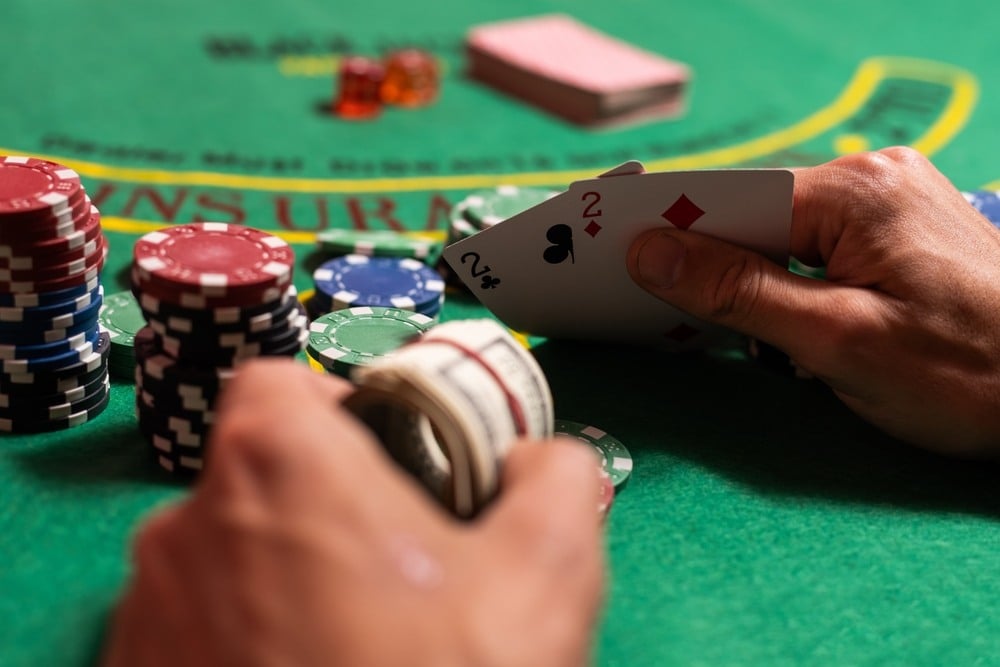
Image credit: Swazall/Shutterstock
Blackjack Payouts in Shoe Games
Most Blackjack players know how to keep a running count of the number of high cards and number of low cards, the so-called hi-lo count. The aces, kings, queens, jacks and tens score -1 and the sixes, fives, fours, threes and twos score +1. The total count is divided by the number of decks remaining to give a true count. When that is greater than 1, the player has a small edge.
There are games where one does not need to play every hand, typically One Blackjack or Infinite Blackjack, which have an unlimited number of player at the table. If you play only when the count is >+1 and play perfectly you should come out ahead.
However, the casino is not stupid and, particularly in Las Vegas, they ask you to leave, or close your account online. if you are betting a significant amount, especially if you bet a large amount at counts above +5, and play perfectly!
The above was generated by my program playing perfectly over millions of hands.
Different Side Bets And Their Payouts
These are usually bad. I say usually but that does not mean we should never place them. There is a tendency among social players to bet because they have attractive amounts paid out. But they usually have a poor percentage return. They should generally only be tried with a shoe game where the number of each card fluctuates dramatically. Let us look at some of them:
Perfect Pairs (Any pair)
This popular side bet typically pays 8-1 on the first two cards for the player being a pair, and 25-1 if they are a suited pair. The payouts vary slightly but average 95.9%.
Hot 3 (Lucky Lucky)
This is a bet on the total of the player’s two cards and dealer’s up card being equal to 19,20 or 21. There is a payout of 100-1 for 777. There is rarely an advantage for the player. The RTP is 94.6%. Lucky Lucky is a version of this with higher payouts for 777 suited, usually with six decks and a payout of around 95.3%.
21+3
The 21+3 bet on three-card poker hands for the first two cards of the player and the dealer upcard. It pays a best 100-1 for Suited Trips and again there is rarely an advantage for the player. The RTP is 96.3% so a slightly better bet than the Hot 3.
Bust It (or Buster)
This is a bet that the dealer will bust, and pays more when the dealer busts with more than three cards. The top payout on some sites for the dealer busting with eight cards is 250-1, but some sites couple the bust with the player Blackjack and pay 5000-1.
It is very hard to calculate the chance of the dealer busting, and the return on this bet is 94.12%. If there are lots of aces, twos and threes in the deck, the chance of a bust with many cards goes up, and the bet can then be favorable.
Crazy Sevens
This is a bet on the first three cards being sevens. If the first one is a seven, you win, and you win more if the first two are both sevens, but the real payout comes from 777 suited, which pays 2000-1. This sometimes has a player advantage when there are few sevens so far in the shoe, but you need to be counting sevens! The RTP is 94.3%.
Maximize Your Blackjack RTP
Your first decision is whether to play a shoe game, when you will need to count and either to vary your bet or sit out to make money, or to play a continuous shuffling game. If you vary your bet significantly you might hit a bad run and lose heavily. Playing for flat stakes on a single-deck game is the safer option, and the return of 99.8% is close to level.
You will often get loyalty points or free £10 or $10 bets as well. Those will dry up, however if you are level on your main bets. Whatever you do, make sure that you play when Blackjack is paid at 3:2 (or better if “I should be so lucky”, as Kylie sang).


